The Blue Spruce, known scientifically as Picea pungens, is a striking evergreen tree renowned for its distinctive blue-green needles and symmetrical shape. Native to the central and southern Rocky Mountains of the United States, this tree has captivated gardeners, landscapers, and nature enthusiasts worldwide.
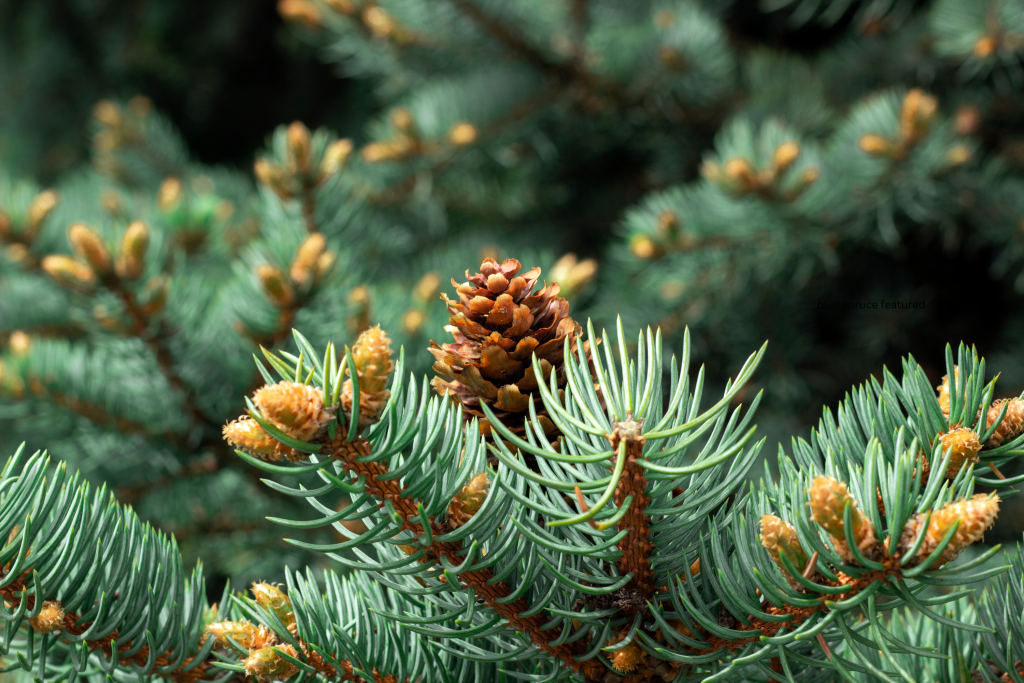
Aesthetic Appeal
The most notable feature of the Blue Spruce is its unique needle color. Ranging from silvery blue to a rich blue-green, the needles add a splash of color to any landscape, especially in the winter months when most other plants are dormant. This vibrant hue is due to a waxy coating that helps the tree retain moisture in its native arid climate.
Growth and Care
Blue Spruce trees are relatively slow growers, typically adding about 12 inches per year. They can reach heights of 30 to 60 feet with a spread of 10 to 20 feet, making them suitable for both large and small landscapes. They prefer well-drained soil and full sun but are adaptable to various soil types and pH levels.
Watering should be consistent, especially during the first few years after planting. Once established, Blue Spruce trees are drought-tolerant, though they still benefit from occasional deep watering. Mulching around the base helps retain soil moisture and protect the roots.
Uses in Landscaping
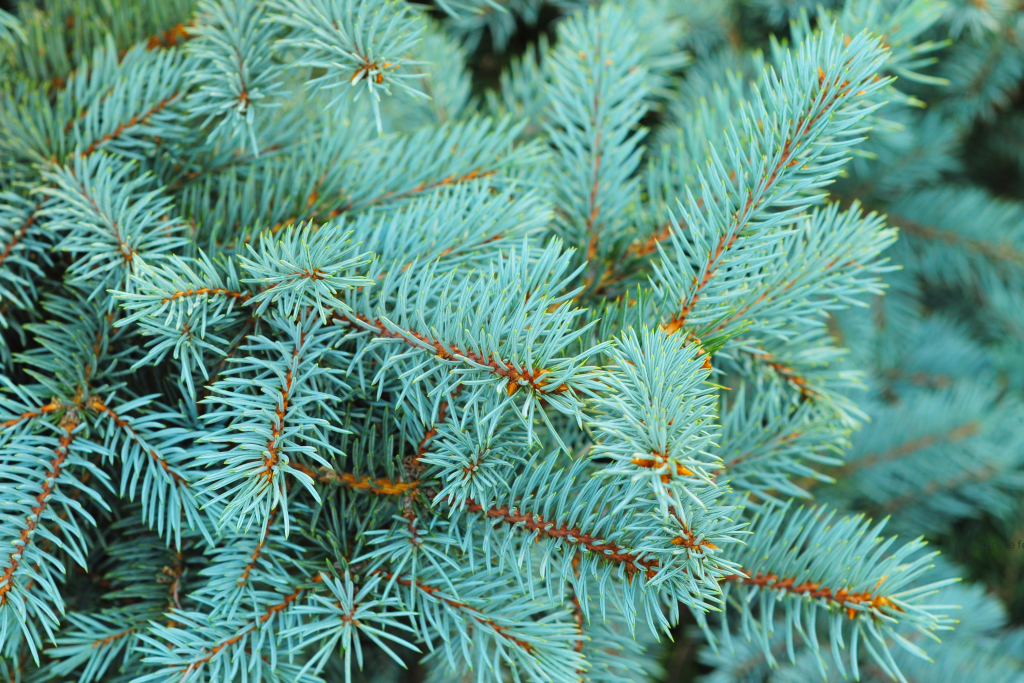
Blue Spruce trees are popular choices for ornamental purposes. Their symmetrical shape and colorful needles make them ideal focal points in gardens and parks. They are also commonly used as Christmas trees, both live and cut, due to their dense branches and strong needle retention.
In addition to their aesthetic value, Blue Spruces can serve practical purposes. They make excellent windbreaks and privacy screens, and their dense foliage provides shelter for wildlife. Birds, in particular, are attracted to Blue Spruces for nesting and protection from predators.
Common Varieties
Several cultivars of Blue Spruce have been developed to suit different landscaping needs. Some popular varieties include:
‘Hoopsii’: Known for its intense blue color and uniform shape, making it a standout in any landscape.
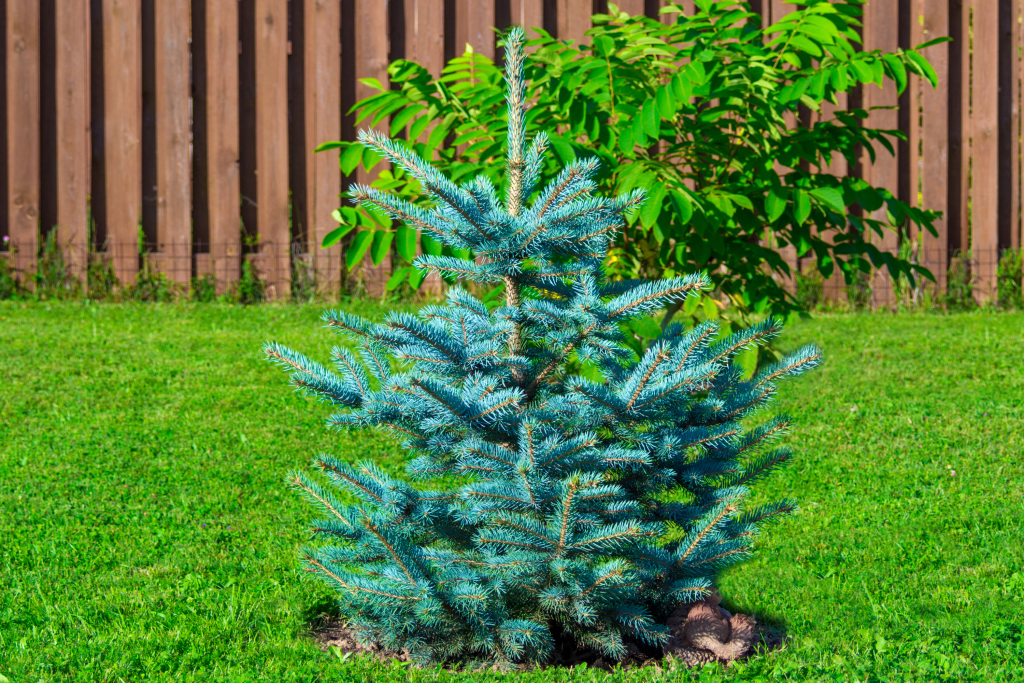
‘Fat Albert’: A more compact variety with a broad, pyramidal shape, ideal for smaller gardens.
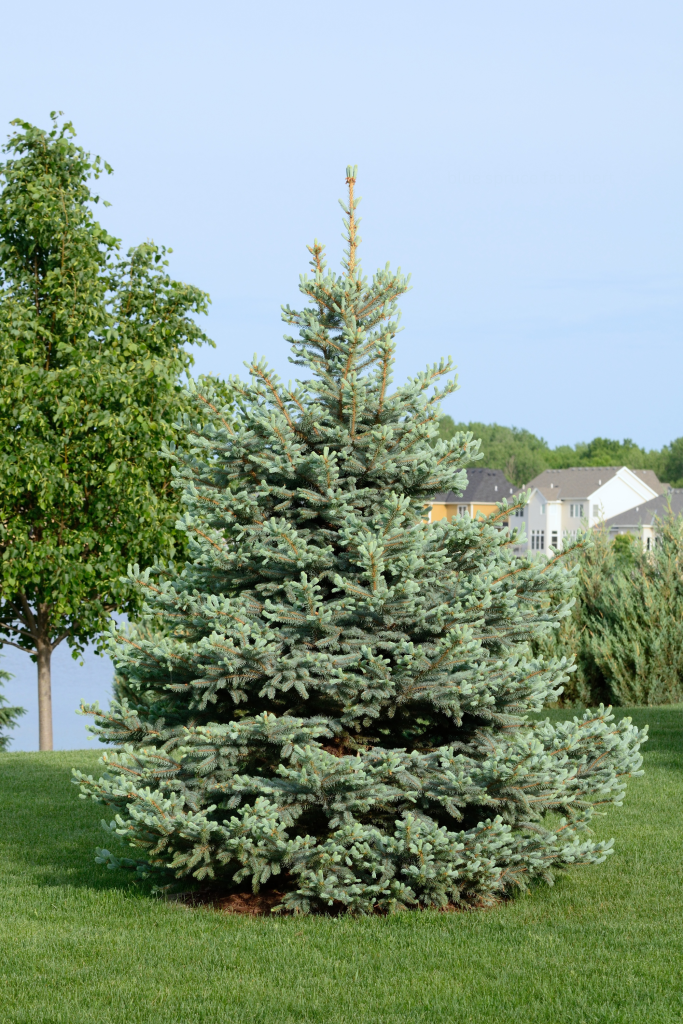
‘Glauca Globosa’: A dwarf form that grows slowly into a rounded mound, perfect for foundation plantings and rock gardens.
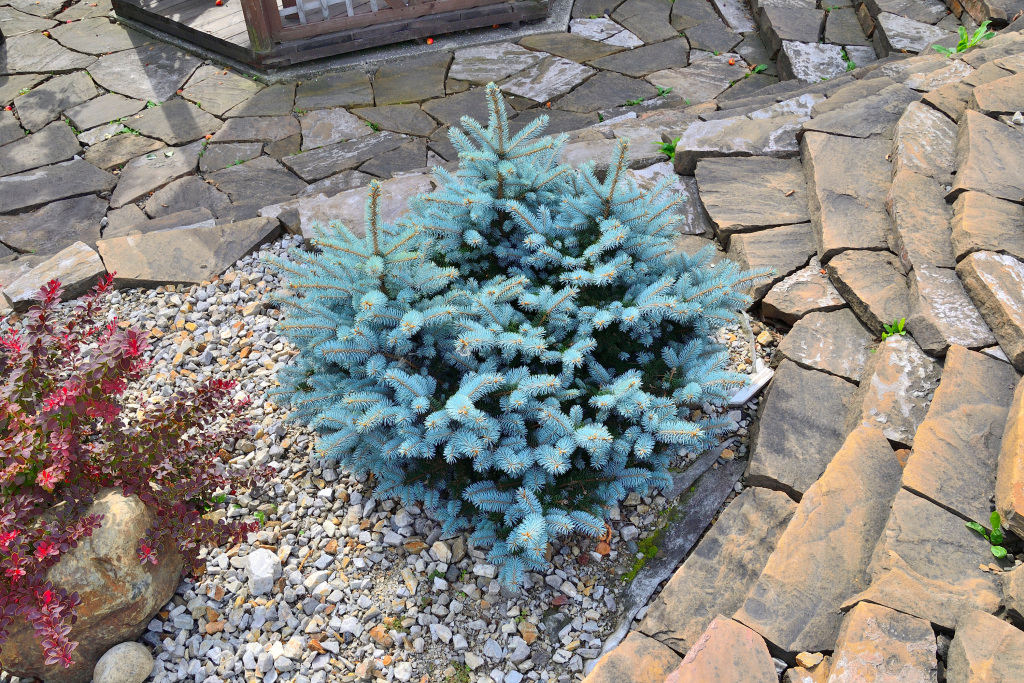
Pests and Diseases
While Blue Spruce trees are generally hardy, they can be susceptible to certain pests and diseases. Common issues include:
- Aphids: Small insects that feed on the tree’s sap, leading to needle discoloration and drop.
- Spider Mites: Tiny pests that cause stippling and bronzing of needles.
- Cytospora Canker: A fungal disease that causes branch dieback and resinous cankers on the trunk.
Regular monitoring and early intervention are key to managing these problems. Maintaining good tree health through proper watering, mulching, and fertilization can also help prevent infestations and infections.
Conclusion

The Blue Spruce is a versatile and beautiful addition to any landscape. Its distinctive color, shape, and adaptability make it a favorite among gardeners and landscapers alike. Whether used as a focal point, a privacy screen, or a Christmas tree, the Blue Spruce continues to charm and inspire with its majestic presence.



